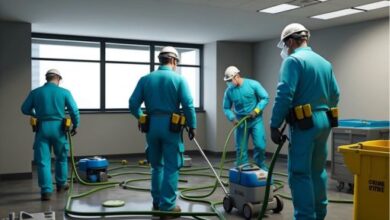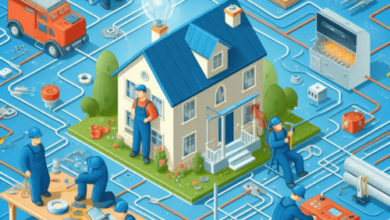Summer Is the Perfect Time to Install Snow Melting Systems

When most people think about snow and ice management, their minds go straight to winter. But when it comes to installing an electric snow melting system, summer is the ideal time to plan and act. Whether you’re managing a commercial property, upgrading a residential driveway, or preparing vehicle access points for cold weather, installing a snow melting system during the warmer months ensures you’re ready before the snow starts falling.
Here’s why summer is the best season to take action.
1. No Snow Means Easier Access to Installation Sites
Snow and ice are the very things you’re trying to eliminate, so it makes sense to install the solution before they become a problem. In summer, the ground is dry, exposed, and accessible. This makes it much easier for contractors to excavate, lay Heating Cables And Systems, and pour concrete or pavers without added delays or complications.
Frozen soil or surfaces covered in snow create unnecessary challenges. Trying to coordinate installations in winter not only increases labour time, but also adds costs related to clearing, heating, or de-icing the work area. Summer avoids all that and allows for smooth progress.
2. Avoid the Winter Rush and Installation Delays
Snow melting systems are in high demand as temperatures drop. Waiting until fall or early winter often means long wait times, limited contractor availability, or product backorders. By planning and installing in summer, you beat the seasonal rush and have the full attention of your supplier and installer.
This is particularly important for commercial properties, where safe access for delivery vehicles, staff, or customers is a year-round requirement. Any delays in winter can result in reduced access, safety hazards, and potential liability. Getting ahead of schedule protects your property and your bottom line.
3. Gives Time for Proper System Planning and Design
Every site is different. Whether you’re retrofitting a small residential driveway or integrating a full-scale snow melting solution into a commercial parking area or loading bay, a well-designed system requires planning.
Summer gives you time to:
Conduct proper heat-loss assessments
Determine power requirements
Review product options, such as MI cables or polymeric systems
Secure any permits or inspections
Coordinate schedules between contractors, electricians, and property owners
Trying to rush these steps in the fall often leads to last-minute compromises or design shortcuts. Summer allows everything to be done properly, from load calculations to control panel installation.
4. Prepares Your Property for the First Snowfall
Once a snow storm hits, it’s too late to start thinking about snow removal infrastructure. Whether you manage a commercial facility or live in a snowy residential area, having a snow melting system installed and tested before winter ensures your property is ready.
Snow melting systems help keep entrances, driveways, and vehicle ramps clear without the need for shovels, salt, or plow trucks. That means improved safety, less wear on surfaces, and no downtime due to blocked access.
When installed in summer, systems can be tested in advance so you’re confident it will perform as expected when temperatures drop.
5. Ideal Weather Conditions for Surface Work
Installing snow melting cables often involves embedding them in concrete, asphalt, or under stone pavers. These materials cure and set best in warm, dry weather.
Summer conditions allow:
Concrete to cure evenly and quickly
Pavers to be laid without frost interference
Asphalt to be poured and rolled with fewer concerns
Cold or wet conditions can lead to weak curing, delays, or early surface damage. Installing in summer provides better long-term performance of both the surface and the heating system underneath.
6. Boosts Property Value and Winter Functionality
Whether it’s a commercial building or a residential property, a snow melting system is a valuable upgrade. It improves safety and accessibility and reduces maintenance costs over time. For homes, it’s a feature that can appeal to future buyers. For businesses, it minimizes liability, improves customer and staff access, and reduces operational disruptions.
Summer installation allows you to make this upgrade without affecting winter operations, avoiding disruption to tenants, staff, or family members during the cold months.
7. TRM Heating Cable Systems Are Built for Canadian Winters
At TRM, we specialize in electric snow melting systems designed to perform in harsh Canadian conditions. Our cables and controls are engineered for long life, energy efficiency, and simple operation. From MI copper systems for heavy-duty applications to easy-to-install polymeric cables, we provide full design support and site assistance to ensure a seamless process.
We work with contractors, engineers, and homeowners to deliver dependable heating solutions that integrate seamlessly with your site’s layout and electrical infrastructure





